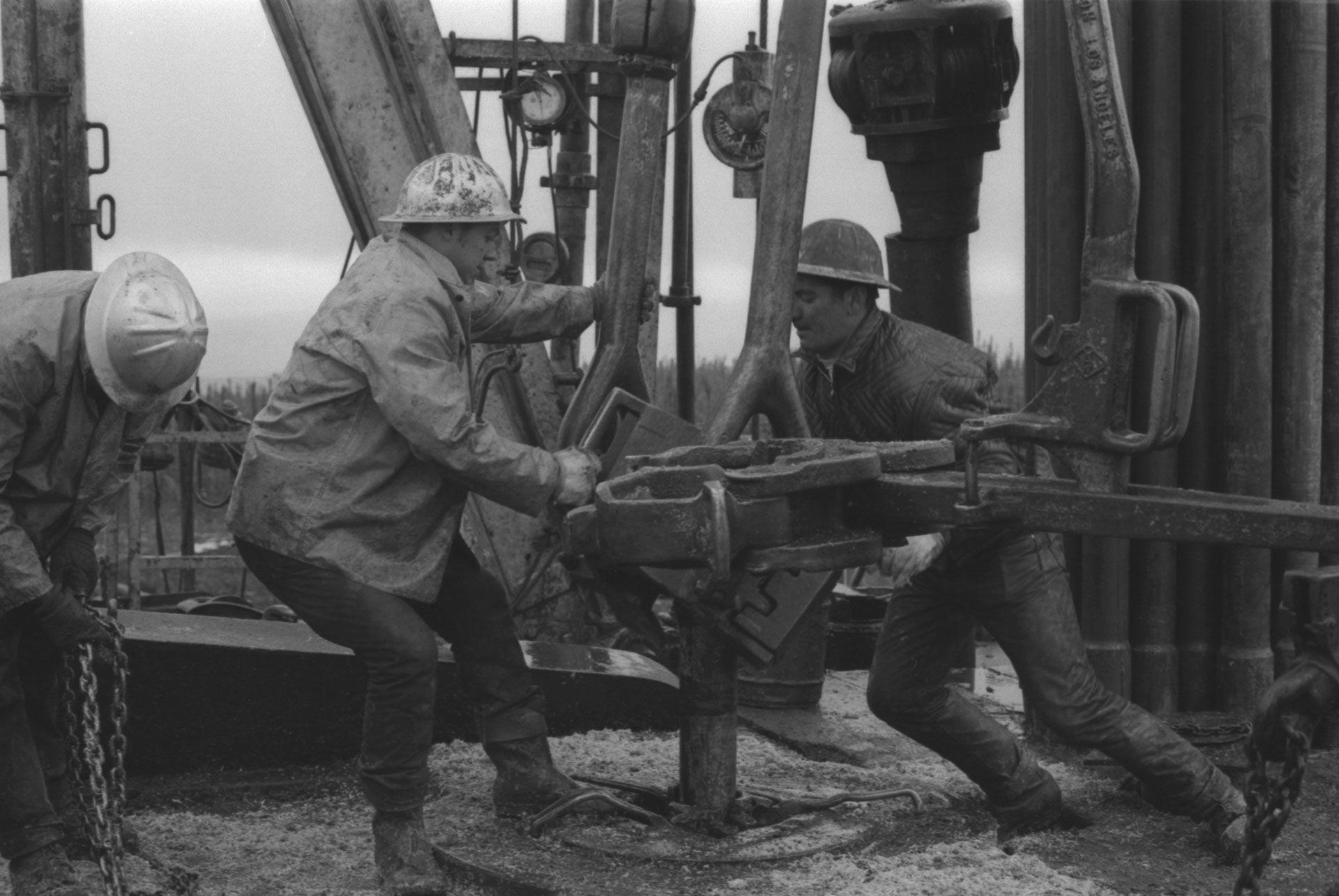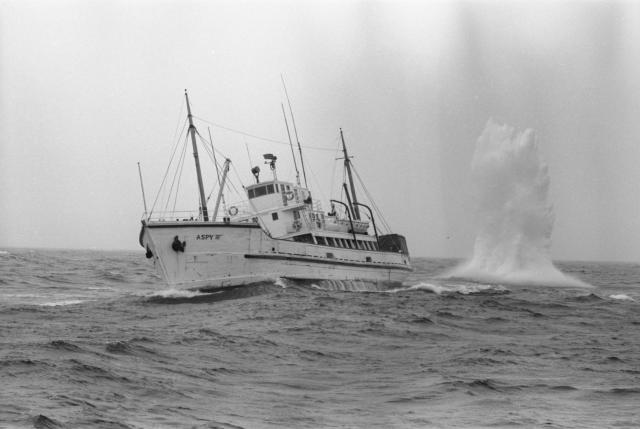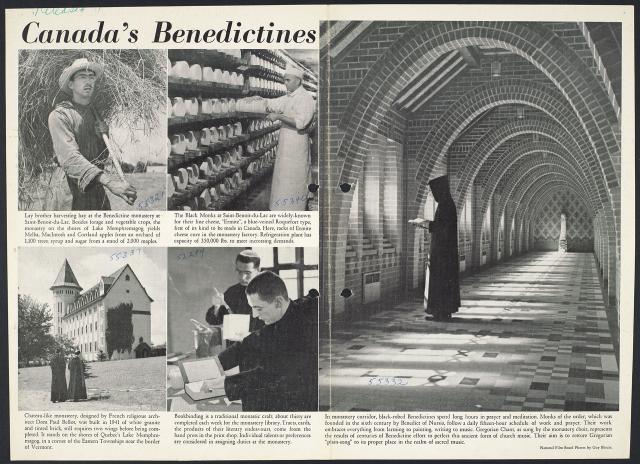
Photostory #399A: Petroleum Exploration Rush Grows: Big Search Across Canada
Photographers
Maker
National Film Board of Canada
Release Date
September 21, 1965
Collection
CMCP fonds
Credit Line
Canadian Museum of Contemporary Photography fonds, National Gallery of Canada Library and Archives
Main Text
With a nationwide explosion of activity, Canada's oil explorers have stepped up their exciting quest in the north, south, east and west. The panoramic stage set for this massive, far-reaching search stretches from where slender spruce saplings defy the sweeping winds along the arctic tree line to where hardy Maritime fishermen face the chilled, heavy waters of the North Atlantic, from where the warm Pacific seas foam gently against heavily-wooded shores to where the white whales cruise in secret in the depths of Hudson Bay. By air, land and sea, the oil seekers are making their geological and geophysical investigations in a growing effort to find future resources of buried energy expected by many to become North America's leading source of vital petroleum in decades to come. The discovery of rich new oil fields (especially in northern sea areas where sailing distances are economically short), could also satisfy hungry markets in western Europe where constantly expanding consumption makes fresh sources of supply an imperative need. Canadian oilmen, looking back at the rapid, healthy growth of their young industry and encouraged by the buoyant present, are looking ahead to even faster expansion - and Canada's biggest oil rush ever is on. In the north, drilling crews probe selected sites in the sprawling wilderness of bush and muskeg and geologists and geophysicists make regional studies of the underlying formations of Hudson Bay and its surrounding shores. In the east, vessels steam nautical mile after nautical mile, explosive charges dropping from their sterns to erupt moments later in tall, white columns of spray as the echoing reverberations bounce back from deep-down layers of rock to the seismographs. In the west, hull-down from the high, timbered Pacific coast, other vessels record more series of explosions. Across prairie plains and in the foothills, extensions of existing oil fields are found, new areas and levels are being probed with success. With 84 oil companies sharing exploration permits for a total of nearly 300 million acres of likely land and marine areas the big oil rush of the sixties is gathering impetus, aimed at the fabulous wealth and rewards promised by international industry's future demands for Canadian oil.
Subjects:
Locations:










